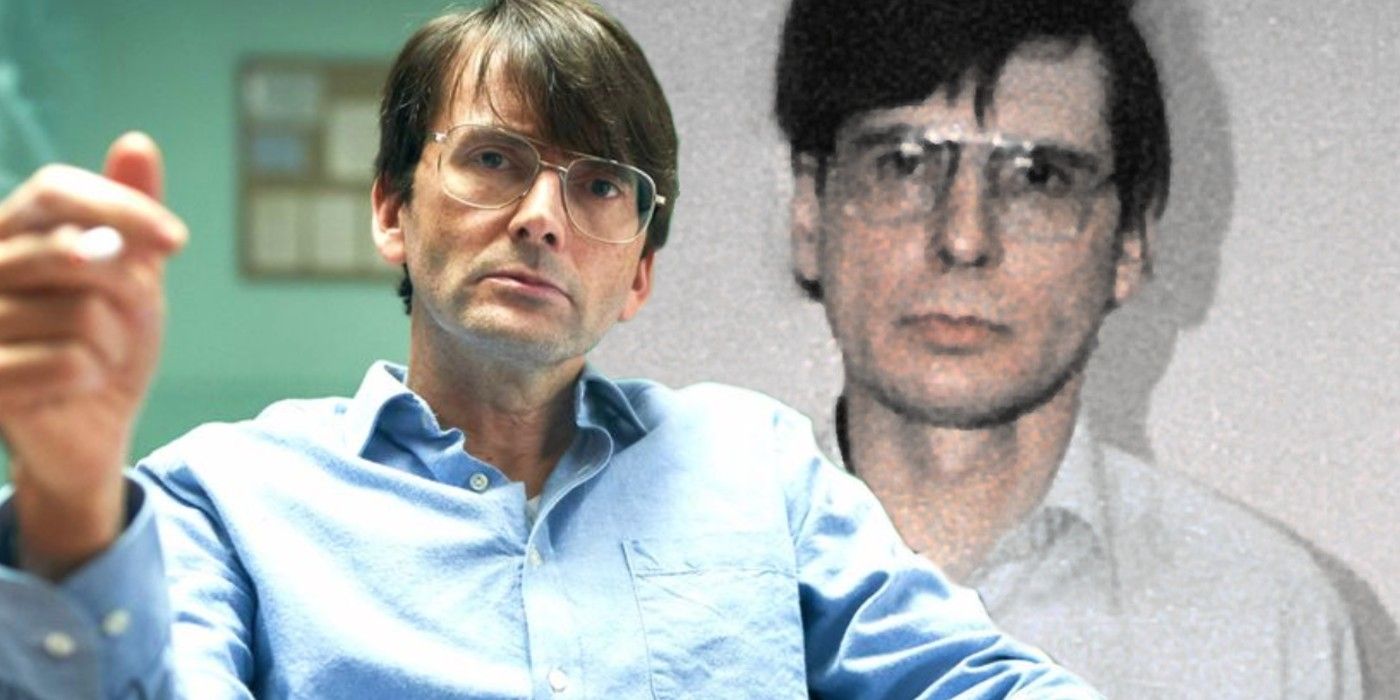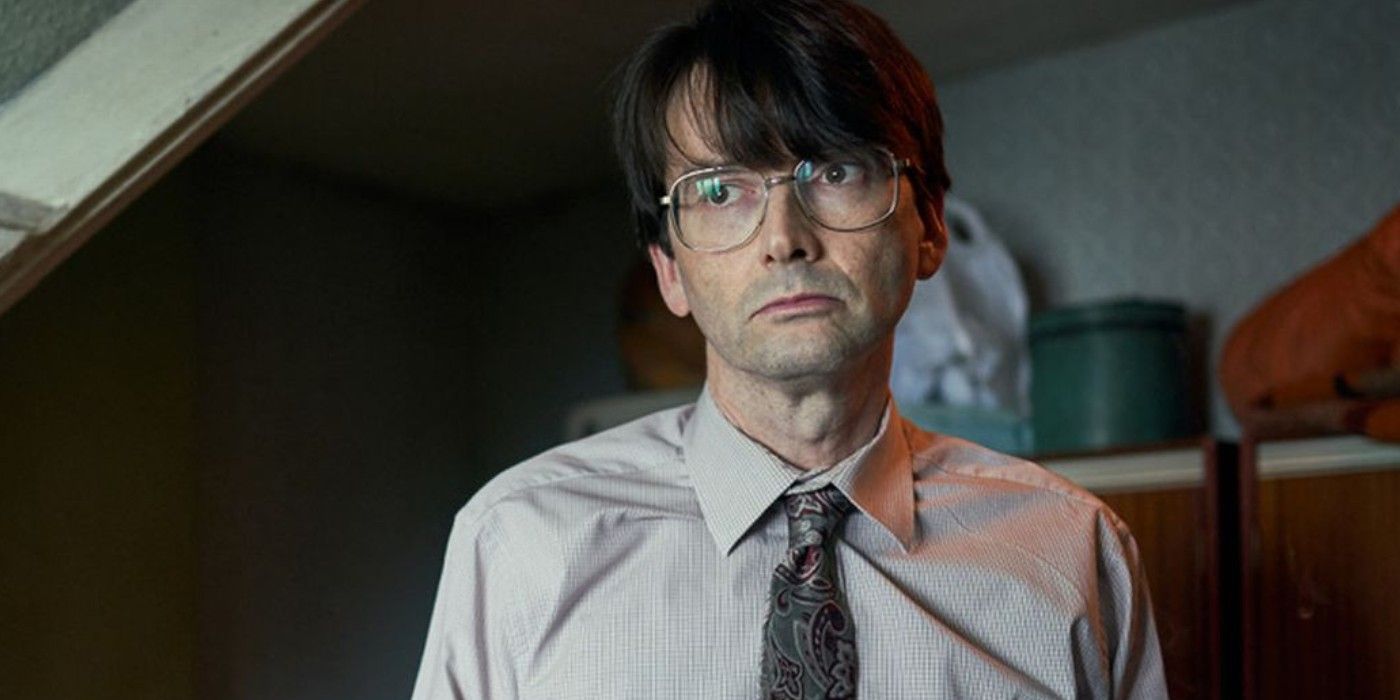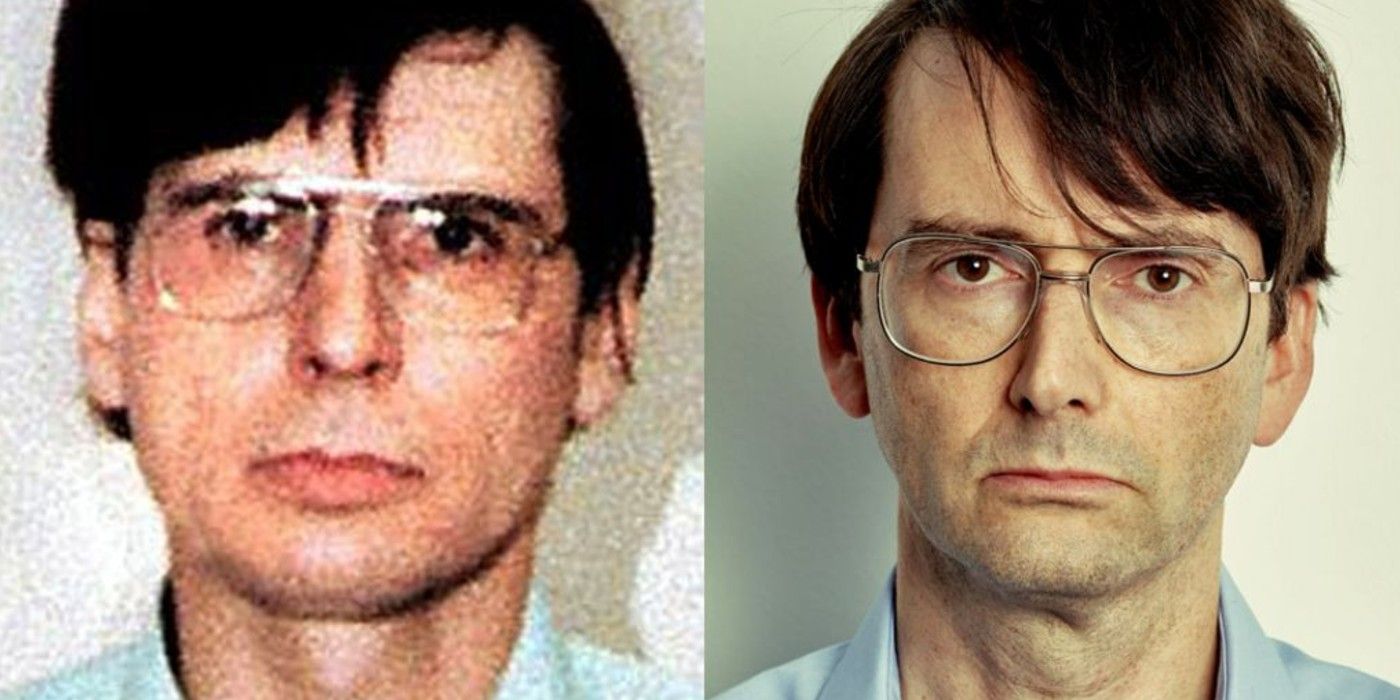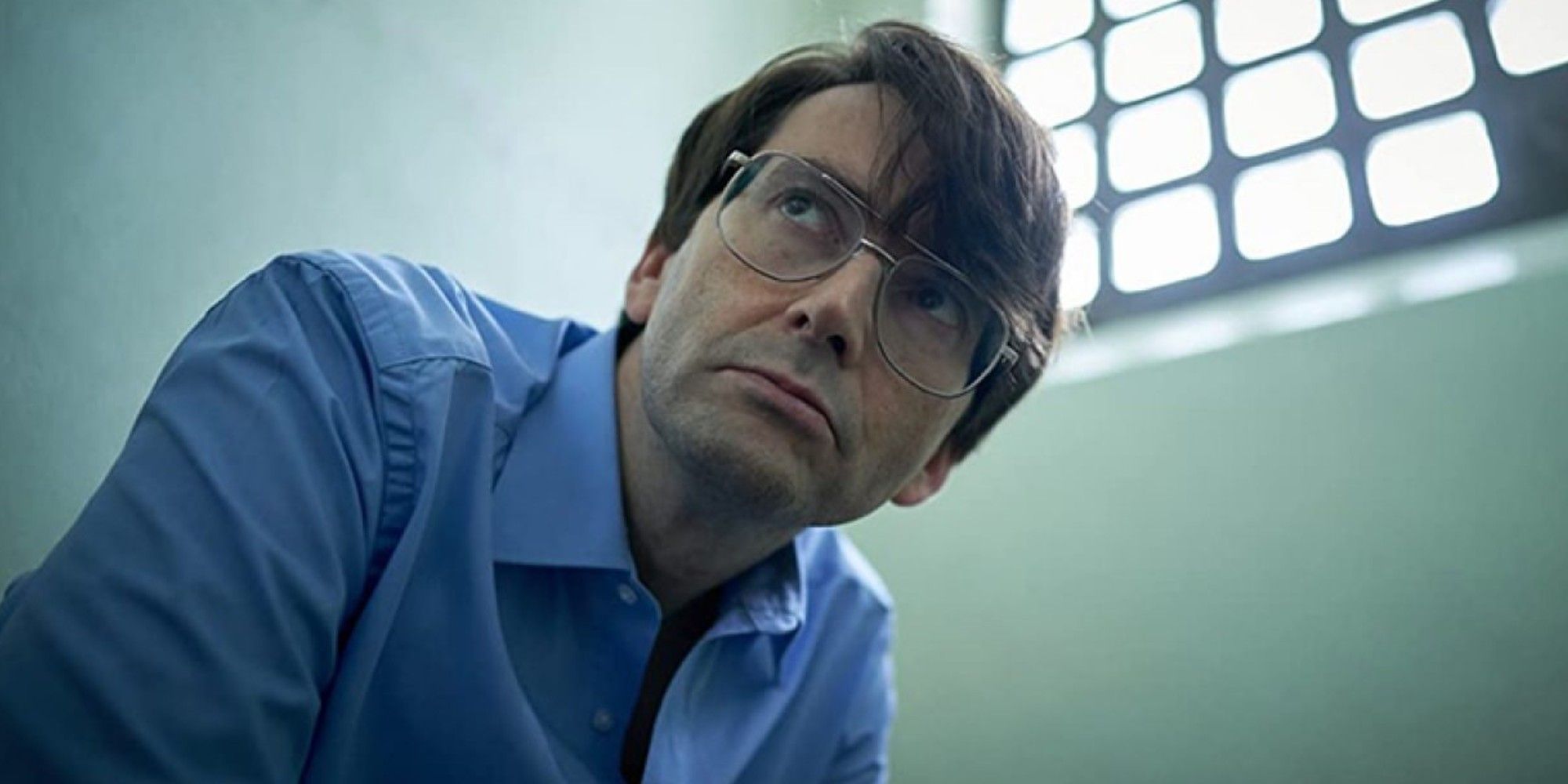
Here’s the chilling true story behind David Tennant’s Des and real-life British serial killer Dennis Nilsen. The murderer, who changed the conversation on killers in the UK after his killing spree between 1978 and 1983 is the star of ITV and Sundance Now’s new drama and his story is one that reads stranger than fiction.
Nilsen has already been the focus of one movie, 1989’s low budget The Cold Light Of Day, but that account didn’t speak to the killer’s motivations beyond a traumatic event in his childhood. Des, on the other hand, is a more unflinching look behind Nilsen’s depraved acts, thanks to its closer basis on Brian Masters’ terrifying, seminal biography “Killing for Company: The Case of Dennis Nilsen”. And thanks to David Tennant’s performance, the viewer is invited to look far more into Nilsen’s killings from a perversely empathetic position. Not to condone, but rather to be even more disgusted at the lengths of his amorality.
The drama originally screened in the UK to a tide of positive reviews, particularly for former Doctor Who star David Tennant’s performance as Nilsen. It’s a tough watch, but an important one, which has now come to Sundance Now. Here’s how accurate Des is and what the true story behind the drama was.

Des opens with real-world footage of London from the late 1970s establishing the idea of the city as a land of promise for young, unemployed people – particularly young men – London was a mess because of the wider economic situation in Britain. Homelessness was at very high levels and unemployment figures reached their peak in 1982 (at 14%). Poverty and vulnerability were an epidemic and what the show doesn’t depict is that Nilsen himself was in extreme poverty when he was given a job working for the civil service in the Job Centre. Nilsen – who would become known as “the kindly killer” preyed on the vulnerable young victims, inviting them to his home with the offer of friendship and kindness before killing them.

Des works backward as a police procedural, with Dennis Nilsen arrested at the start and the crimes revealed horrifyingly over the course of the rest of the first episode and the subsequent court case that plays out in the final two. In episode one, David Tennant’s killer is initially investigated because someone calls in a blocked drain, which Nilsen had blocked with human remains affecting the drainage of other residents of the block who called in a plumber. The plumber found lumps of flesh and reported it to his superiors in the presence of the residents, prompting Nilsen to return later that night and hide the evidence, which alluded to, but left out the details of. When quizzed, Nilsen said the remains were the remnants of a KFC meal and had considered replacing the remains with chicken bones, but the sanitation worker identified a human knuckle and informed the police. The residents also reported Nilsen’s movements in the night. When police turned up at his home, with Nilsen out at work, he returned and acted horrified at the drain’s contents but as with the show’s version of the story, when he was asked where the rest of the body was, he confessed immediately.

In the show, Daniel Mays plays Detective Peter Jay who was a real-world figure and the key investigator in Nilsen’s case. He was the Hertfordshire-based DCI charged with identifying the bodies. He was one of the police sent to Nilsen’s home and was struck by the smell in Nilsen’s flat, just as Mays’ version was in the show. He was also one of two police Nilsen confessed to killing “15 or 16” people since 1978 and one of the first to return to Nilsen’s property to search for evidence and discovered two plastic bags full of body parts. While it’s true that Nilsen boiled the heads of victims to remove their skin, that wasn’t the case when Jay first arrived at the property. After the blocked drain was discovered, Nilsen removed the remains of his final victim from his kitchen and locked them in bags in a cupboard.

Des is told from three perspectives – those of DCI Jay, Nilsen himself, and writer Brian Masters (who is played by The Crown star Jason Watkins) who wrote “Killing For Company” and was a consultant on Des. He met Nilsen for interviews while the killer was remanded in prison. According to the writer, he was compelled to write the biography because he wanted to offer an analysis of Nilsen’s crimes as the case “threatened to be submerged by uninformed outrage, delighting in details.” He also claims he was unaware that interviewing Nilsen was forbidden, though the show seems to lean on him being underhand consciously to exploit the system. As in the show, Nilsen had written accounts of his crimes in a prison memoir, which he gave Masters access to, offering an unprecedented insight into his own thoughts of his crimes.

Arguably the most chilling part of Des is how well David Tennant plays Nilsen, right down to his physical resemblance. That much is very accurate and his demeanor and vocal performance are also very close to those of Nilsen. Thanks in part to Nilsen’s own amateur videography, there is evidence of what he was like and he gave an interview to Central Television in 1993 for a program called Murder In Mind, which formed a basis for Des‘ accounts of his murders. The disarming and frankly harrowing way Tennant relates Nilsen’s crimes without emotion very much fits how he talks about the disturbing details of killing and dismembering his victims in the 1993 interview, which is eerily similar to some of Mindhunter‘s killer interviews. Some of the quirks of his speech are also very well observed in Tennant’s performance.
Des also changes some details of Nilsen’s backstory, though his assertion that he was bringing victims back to his home for company primarily (before things escalated) was also true to the real story. What the show plays down is that Nilsen had a long-term boyfriend before he started killing – with whom he got his dog Bleep, who is in the show. More important to the show seems to be Nilsen’s past as a police officer, which he was, though there’s no great exploration of the loneliness he said he felt when he was off duty. That much is an easy enough cut as it threatened to humanize Nilsen in Des – far more important were the real and very disturbing quotes that came out of the 1993 interview.

Despite confessing, Nilsen complicated the run-up to his trial by firing his initial legal aid, Ronald Moss, before reinstating him, then firing him again and hiring Ralph Haeems, who he was introduced to thanks to a fellow prisoner with whom he fell in love. That much was left out of Des. It was Haeems who decided to go for a “diminished responsibility” defense, based on a mental abnormality in his client.
The show’s depiction of Nilsen’s books of “Sad Sketches” and diary notes, upon which “Killing For Company” was true to real-life too. The scrawled books showed in grim detail what he had done to some of his victims, though Nilsen seemed to express some regret, becoming ill when confronted with the crime scene photos and, as Des shows, saying on the eve of his trial that “I have judged myself more harshly than any court ever could.” Nevertheless, Nilsen did put in pleas of “Not Guilty” to each of his charges, despite the prosecution using Nilsen’s own statements to suggest he was fully aware of his actions and intent. The trial began on October 24, 1983 with Nilsen attempting to undermine the credibility of his surviving victims called as witnesses, as is shown in Des, in the face of weighty evidence, including Martyn Duffey’s knives, which also come up in the show.
During the trial and the interviews with Nilsen, his past and the traumatic impact of his grandfather’s death came up and one defense psychiatrist suggested the killer had a “Borderline False Self As If Pseudo-Normal Narcissistic Personality Disorder” that made him unable to commit malicious pre-meditative acts. A prosecution psychiatrist, Dr. Paul Bowden, who had spent more time with Nilsen suggested he was manipulative but without a mental disorder. The judge simplified that in the summing up by telling the jury that a mind could be evil without being abnormal.
The jury retired on Thursday, November 3rd. Two dissenters split the verdict, but the judge ruled that he would accept a majority. At 4:25 pm that day, the jury returned the verdict that nilsen was guilty on all counts, and Nilsen was sentenced to life in prison, without eligibility for parole for 25 years.

Each of the named victims in Des are Nilsen’s real victims, though some of the details were truncated to fit the show’s format. It is accurate that several of Nilsen’s victims survived his attempts to murder them. Nilsen himself specified that he made seven attempts that ended with him being fought off or simply changing his mind. Three of those victims testified against him at trial: Paul Nobbs, Douglas Stewart, and Carl Stotter. Andrew Ho, Stewart, Nobbs, Toshimitsu Ozawa and Stotter all escaped. Stotter’s testimony was key to prosecuting Nilsen, but sadly his traumatic experience led to his early death as an alcoholic aged just 52 in 2013.
Nilsen’s known victims:
Stephen Dean Holmes, 14
Kenneth Ockendon
William Sutherland
Martyn Duffey, 16
Malcolm Barlow
John Howlett
Stephen Sinclair
Graham Allen

Nilsen gave a key, haunting interview in 1993, upon which a lot of the show’s details are built. including lots of the killer’s mannerisms and his harrowing assertion that he was “just an ordinary man” whose motivations were never quite agreed upon. Locked away for the rest of his life, Nilsen lived until 2018 as reported in Des‘ epilogue, and died in York hospital at the age of 72 thanks to a pulmonary embolism and retroperitoneal hemorrhage that allegedly saw him die in excruciating agony.
Des is available on Sundance Now.
Originally from https://screenrant.com/des-dennis-nilsen-tennant-true-story-serial-killer/
